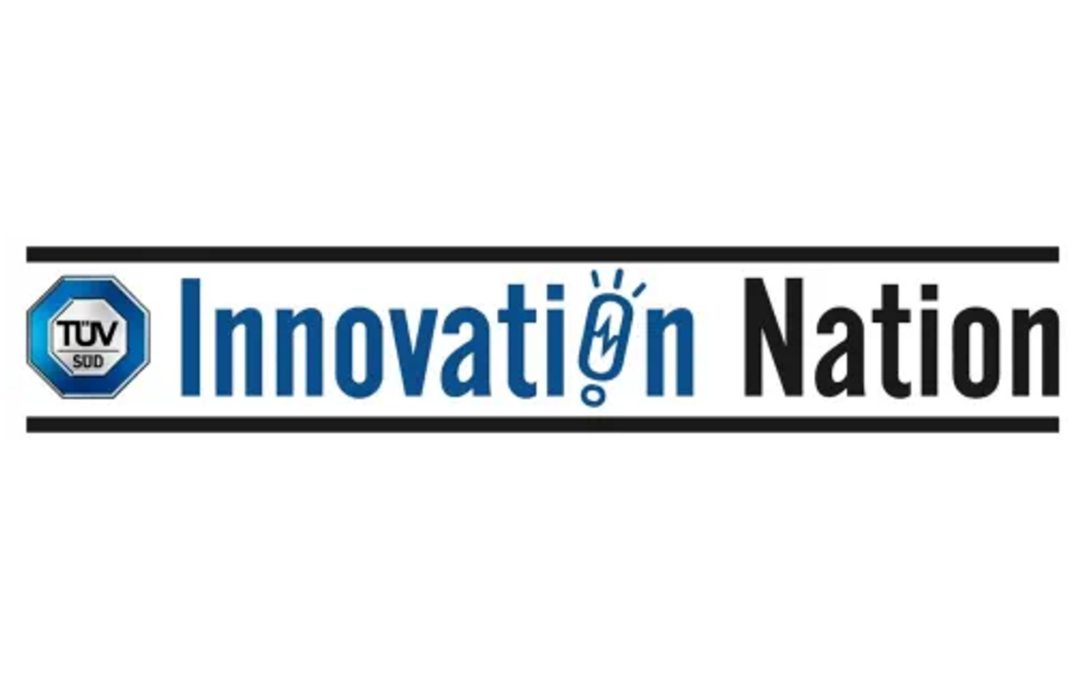


3 Common Innovation Gaps (and How to Close Them)
A few weeks ago, I wrote that innovation happens in the gaps and offered a few suggestions for finding and closing those gaps.
But I only told you half of the story.
The gaps I wrote about are market gaps, the ones between what your customers want or need and what you offer.
These gaps are relatively easy to close because they exist through no fault of our own and we have tools like customer research and R&D to help close them. Closing these gaps is simply what we are in business to do.
But there are other gaps. Gaps that are harder close, mainly because no one wants to see them. These are the gaps inside your organization – the ones that exist between what you need, want and are willing to do.
These gaps exist because status quo is more comfortable and certain, and executives have little to no incentive to close them. These are the gaps that create room for disruption and take down once-great companies.
Mind the INTERNAL Gaps
Need: What you must do to stay in business. Need To Dos aren’t glamorous, doing them won’t give you a competitive edge or make you immune to disruption. But, if you don’t do them, you’ll go out of business much faster than if you do.
Want: What you aspire to do. Want To Dos are what you wish your company would do, achieve, or be known for. These are the things you declare at company meetings, the BHAGs, and the visions. They are what inspire and motivate employees. They are also things that rarely happen because…
Willing: What you do in addition to the Need To Dos. If “want” is the talk, “willing” is the walk. Doing the Wants drives your resources allocation and investment decisions, drives the goals and KPIs you measure, and determines the expectations you set with shareholders. Willing is what you commit to and base your compensation, and maybe even job, on
Close the Gaps
Need / Want: The Comfortable Gap
Closing this gap is comfortable because you know how to do it. You know that just doing the basics isn’t enough to survive in a competitive world and you have experience investing in improvements that are almost certain to increase revenues and/or decrease costs in the near-term.
If you have a gap between what you need to do and what you want to do, understand why the gaps exist and invest in closing them.
Need / Willing: The Deadly Gap
Avoiding this gap is what drives most executives and entrepreneurs because this is where companies die. Startups face this gap when they need more capital but investors aren’t willing to provide it or when they need to pivot but are unwilling to let go of their idea.
Giant, successful companies face this when consumer expectations change, technology leaps forward, and the basis of competition shifts. They see it happening, but they are unwilling to change. They cling to their business models, relentlessly focusing on better serving their best customers until they are, ultimately, disrupted.
If you face a Need/Willing gap, you need to decide whether you will let go of the safety of the current business to invest in disrupting it or whether you will “get while the getting’s good” and milk as much revenue and profit out of the business before it finally succumbs. Both options are valid but making a choice requires great courage. Unfortunately, most executives are too afraid to make that choice and their companies become victims of indecision.
Want / Willing: The Heart-breaking Gap
Seeing this gap is hard because it exists as a direct result of decisions made by the very leaders who seek to close it. How many times have you heard an executive declare “We need to be more innovative!” and then embark on a year-long cost-cutting initiative? Or ask people to come up with ideas in their free time? Or shift resources from innovation to core business operations?
If seeing the gap is hard, closing it is infinitely harder. Closing it requires change, it requires executives and employees to do things differently, often doing the opposite of what they’ve always done. It requires smart risk taking and the willingness to learn. It requires prioritizing the next decade over the next quarter.
If you face a Want/Willing gap, you need to look in the mirror and honestly answer two hard questions – Why do you want to be more innovative? What are you, personally, willing to sacrifice to be more innovative?
If your only answer to the first question is, “I think we should be,” or your answer to the second is “nothing,” STOP. The gap is too big to close because you don’t have the will to do what needs to be done to drive change.
But if you have clear and meaningful answers to the first question and you’re willing to make personal sacrifices if required, then you’re ready to do the challenging, frustratingly slow, but profoundly rewarding work necessary to close the gap.
Mind the Gap or Close the Gap?
There are gaps that we comfortably live with, gaps that will destroy us, and gaps that will break our hearts. All gaps can be closed, but each requires different levels of commitment, courage, and time.
Are you willing to close the gap?

On How The Behaviors That Make Leaders Successful Conspire To Kill Innovation

Innovation Happens in the Gaps
“Innovation happens in the gaps.”
It’s a statement so simple yet so profound that as soon as my client said it, I wrote it down.*
It’s not sexy to innovate in the gaps.
Most people and companies believe that innovation must be something entirely new for the world. That innovation is all about filling a white space, thinking blue sky, or swimming in a blue ocean. That innovation must be free of constraints, that it must be pure creation.
Most people will argue that CEOs rarely get on the front page of the Wall Street Journal because their company introduced something better than what exists today. Innovators rarely win design awards for an improved version of an existing solution. Scientists and engineers are rarely celebrated for receiving improvement patents.
Rarely.
Steve Jobs made the front page for the iPod, an MP3 player that offered better storage and user experience than the dozens of MP3 players that existed before it.
Charles and Ray Eames were named “The Most Influential Designer of the 20th Century” by the Industrial Designers Society of America, and they’re best known for designing chairs.
Thomas Edison is hailed as the inventor of the electric lightbulb when, in truth, he significantly improved a decades-old product that was too expensive, too unreliable, and too short-lived to be commercially viable.
It’s necessary (and profitable) to innovate in the gaps.
Gaps exist because of real and perceived constraints. Innovation thrives in constraints because it is the constraints that drive creativity.
In the gap between what is and what is good enough lies a problem that needs a solution. That solution, something new that creates value, is innovation.
In the gap between what is and what is delightful lies an opportunity that wants a better solution. Innovation can deliver that solution.
Find the gaps
Sometimes gaps are obvious, like the cost and performance gap between candles and early light bulbs that contained costly platinum and only lasted a few hours.
Sometimes they’re not, as evidenced by the difference between people who owned MP3 players before the iPod versus after the iPod debuted.
To find the gaps, talk to customers. What do they use now and why? What do they not use and why? What do they wish for and why? What is not good enough and why? What is delightful and why?
To find the gaps, don’t sit in a conference room. You won’t learn anything new by talking to the same people. And don’t obsess about competition. If you do what competitors are doing, you’ll do no better than your competitors.
Talk to your customers. They’ll point out the gaps. Then innovate to fill them.
*I learned later that he had first heard it from Tim Kastelle, an Australian academic and author focused on innovation.

4 People You Need On An Innovation Team
“Who should be on our innovation team?”
Unfortunately, innovators, especially those able to succeed in a corporate setting, rarely announce themselves with the fanfare they deserve (And if they do, run away. Trust me.)
Where to Start
You know that you need a multi-functional team to ensure diversity of experience and expertise. But beyond that, every other option is rife with trade-offs
- High performers have loads of credibility in the organization, but they may be hesitant to question the status quo and struggle with ambiguity
- Squeaky wheels are comfortable challenging the status quo but may not have the organizational clout and goodwill to get things done
- New hires bring a fresh perspective but don’t have the relationships and political savvy to navigate the organization
- Independent contributors have domain expertise but may not be able to think beyond their domain or work well in a team environment
Your instincts are right. These people could be incredible additions to an innovation team but you need to diagnose the motivation, the Why, behind their actions.
How to Succeed
Just as identifying and understanding your consumers’ or customers’ Jobs to be Done is essential to growing your business, identifying and understanding employees’ Jobs to be Done is essential to building your innovation team.
The successful innovation teams I’ve worked with all have people who fill these roles:
- Reformer – This person wants to do the best they can and support teammates to achieve the same. You can find them by looking for the person who always says, “We can do better,” never meaning it as a critique but rather as a genuine desire to achieve the team and the company’s full potential.
- Rebel – This person also wants the company to live up to its potential but isn’t willing to accept “better.” They want the best. To find rebels, look for the people asking “Why?” refusing to accept “because that’s how we do it,” and annoying more than a few people in their periphery. To find the rebels that will propel your innovation team to success, look for those whose past successes and strong relationships have earned them the freedom to be the squeaky wheel.
- Realist – This person who takes pride in making things happen, especially if it requires a bit of creativity along the way. They know just how far and just how hard to push before everything breaks, how to navigate the organization, which ears to whisper into, how to challenge people without alienating them, and which battles to fight and which to fight another day. They’re willing to be patient and play the long as long as the successful change is in sight.
- Responder – This person takes pride in making things happen together, not only as a small team but with the broader organization. They learned from experience that it doesn’t matter how brilliant something is if leadership doesn’t support it. They carefully craft the team’s agenda to be the organization’s agenda. They pull people in as advisors and thought partners. They listen to feedback, finding ways to accept it or explaining why rejecting it is in the company’s best interest.
Sometimes one person can play many of these roles, and sometimes these roles must be played by four different people. The key is finding people with the deeply held Jobs to be Done that motivate them to act in ways that will unite the innovation team, accelerate its work, and enable it to achieve real success – growth and more revenue for your company.